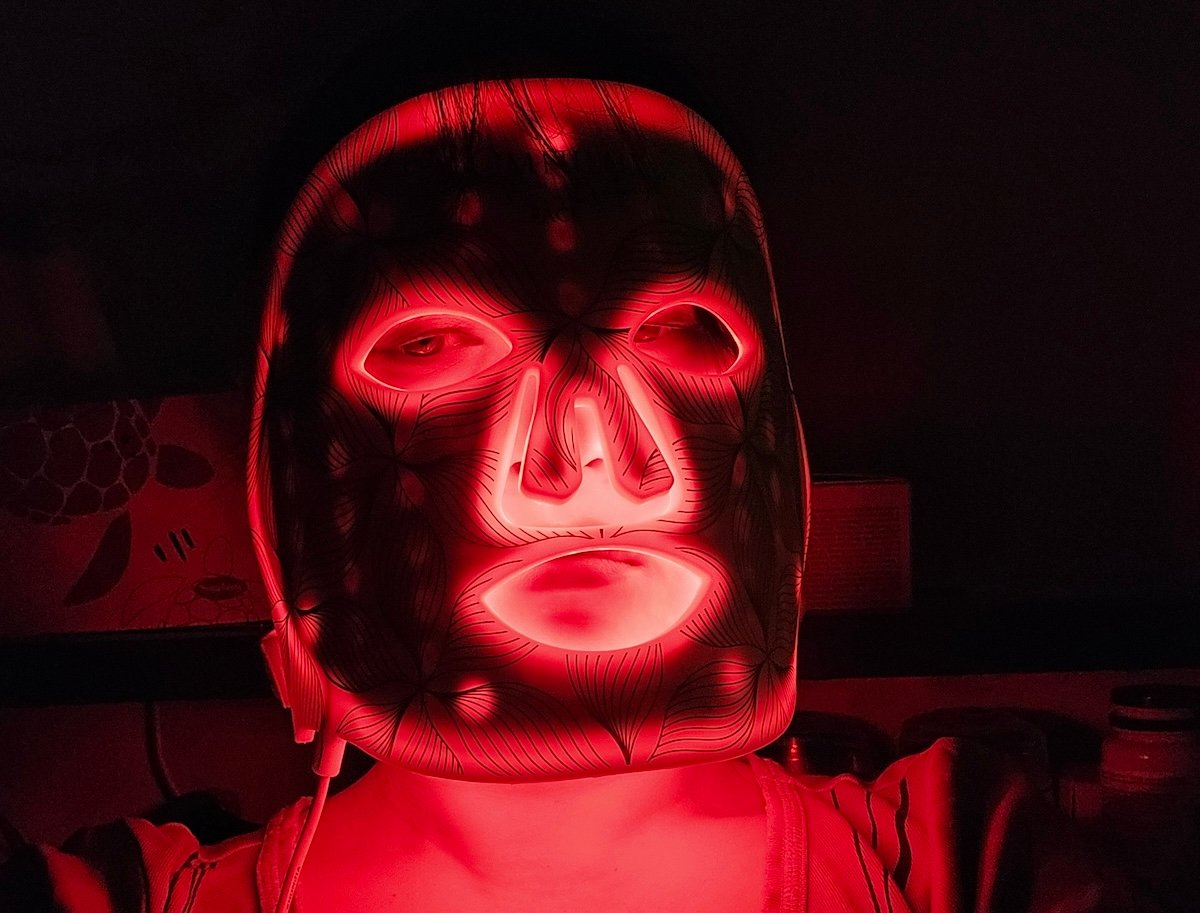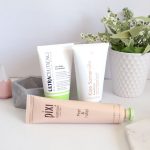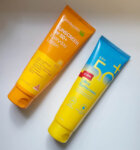Since my post on the science behind red light treatments, many people have asked me if light treatments make hyperpigmentation worse.
This is a bit complicated to untangle, given the relative lack of data and the huge diversity of red light products. So this post is somewhat speculative – but I hope it’s helpful if you’ve been wondering!
Note: I’m using “red light” as a general term for low level photobiomodulation (PBM) treatments (e.g. masks and panels, not high powered lasers). These usually also use infrared light, and sometimes other wavelengths (blue, yellow, green) too.

What do we know?
Photobiomodulation’s mechanism of action
Red and infrared light seem to mostly work by speeding up biological processes, such as by speeding up respiration in the mitochrondria. Infrared penetrates deeper than red light, but both reach the dermis, so both can get to the melanocytes which sit in the basal layer at the bottom of the epidermis.
Related post: The science of red light masks

Mechanistically, this means photobiomodulation could speed up the production of melanin by melanocytes, but it could also speed up the turnover of skin and reduce inflammation, which would help with hyperpigmentation.
Respiration also causes oxidation, and in excess this could overwhelm the antioxidant mechanisms in your cells – this is thought to be a reason why the benefits of light start decreasing at higher total doses and brightnesses. Antioxidants are one of the main ingredient categories for preventing hyperpigmentation.

It’s also worth remembering that light treatments are kind of finnicky – as well as dose being complicated (discussed in detail here), different wavelengths within the buckets of “red” or “infrared” can have very different potencies.
Clinical data
Like with most skincare treatments, there’s a lot less evidence on red light treatments and hyperpigmentation (how melanin-producing skin tends to age) compared to fine lines and wrinkles. There’s also less data on darker skin. But there are some clinical trials showing that light treatments can reduce hyperpigmentation, including in darker skin.
In particular, one South African study reported successfully treating 60 subjects with melasma, with Type V and VI skin (ethnicity reported as mostly black and Indian). They used 633 nm (red) and 830 nm (infrared) from an Omnilux panel, at 105 mW/cm2 and 55 mW/cm2 intensity – far higher than any mask. (See this review from Galache et al. for more details, and this post from Gembared for a comprehensive list of studies.)
The same researchers also conducted a pilot study with 6 subjects, all with melasma and type VI skin. 5 showed improvements, while one subject had darkened hyperpigmentation. The researchers noted that it seemed like she was using abrasive scrubs at home, which could be aggravating the melasma.
There’s also research on using red and infrared light to successfully treat hypopigmentation (lighter patches of skin), such as in vitiligo.
Blue light
It’s pretty well established that blue light can increase pigmentation in darker skin (Types IV to VI). Tinted products which contain blue light-absorbing iron oxides can also help reduce hyperpigmentation from sun exposure, which is the overwhelming source of blue light for most people.
Related post: How to Protect Your Skin Against Blue Light: an Update
Anecdotal evidence
As I’ve discussed before, anecdotal evidence is very useful for less studied treatments, especially when there’s a lot of variation in products and routines, but it should be taken with a grain of salt.
Related post: Science vs Anecdotal Evidence and Reviews
In reviews and forum posts, there’s a mix of people claiming their hyperpigmentation got darker, while others say it’s gotten lighter. Where there’s extra details, a few people have stated that this happened after one treatment, but usually people have said they used the products more than recommended (e.g. every day or 20 minutes a day, instead of 10 minute treatments 3-4 times a week). Most seem to be treating their hyperpigmentation with other skincare products.
Interestingly, some people have mentioned their pigment darkening before getting lighter, which could signal that PBM treatments are working by increasing skin turnover and shedding pigment, similar to laser treatments.
My skin is very prone to hyperpigmentation, and over the last 4 months where I’ve used red light masks a few times a week, my spots seem to have gotten lighter.
It’s hard to attribute this to red light masks alone, since I also use a lot of pigment-fading topical skincare products. But this was over the Australian summer where my pigment usually gets darker, and I haven’t made any other big changes in the ingredients I’ve been using, so it seems to have been beneficial for me. Vanessa of Goals to Get Glowing also struggles with hyperpigmentation, and hers has gotten lighter as well.
Red versus infrared light
I’ve seen a lot of people claim that only infrared light will worsen hyperpigmentation and red light is completely safe, but unfortunately this doesn’t seem to be the case.
Sometimes the reasoning is that infrared causes heat which causes hyperpigmentation, but this doesn’t really make sense here. Infrared and heat do go hand in hand – infrared makes a lot of molecules jiggle, which is essentially what heat is at a molecular level. However, heat itself doesn’t contribute much to melasma or hyperpigmentation until your skin gets quite hot (45 °C = 113 °F – for reference, hot water comes out of household taps at about 50 °C).
Commonly used red light masks shouldn’t be making skin that hot, even though some people have reported more pigment with them (overheating is much more possible with panels which are more prone to user error, or certain masks with higher irradiances). Some people have also reported darker pigment from using just red light alone.
So it’s much more likely that it’s an inherent effect of photobiomodulation, due to going past the beneficial “peak” – all these observations could be explained by, say, excess oxidation or overstimulation of melanocytes beating out the pigment-reducing mechanisms.
What to do?
I think it’s clear that darkening of hyperpigmentation is a potential side effect of light treatments, but it seems to be a lot less common than improvements, and it likely varies with individual factors.
Some dermatologists recommend avoiding light treatments completely if hyperpigmentation is a concern – in my opinion this is a very valid choice. If you’ve spent a lot of time and money on fading stubborn hyperpigmentation (especially melasma which can be tricky to treat), light treatments might not be worth the risk.
If you’re less risk averse and still want to try out red light treatments, these precautions should make it less likely:
Avoid blue light (or use it sparingly). Blue light only really helps with acne, and there are lots of other acne treatments without this risk.
Test the product on another part of your body first. Most masks recommend a sensitivity test on your inner arm (i.e. run a full treatment on it before using it on your face). I’d recommend trying it on an area that’s more prone to pigment as well, like the back of your hand. While this isn’t a guarantee since your face can react differently, it can give you some idea. You might also want to test it on a less visible part of your face first (e.g. forehead if you have a fringe, near your ear…).
Stick to the recommended time, or even start slower. For example, instead of using the mask 3-4 times a week for 10 minutes, consider using it only for 5 minutes at a time or twice a week, until you get to know how your skin responds.
Choose a product with well-tested wavelengths and irradiances, and look for reviews of that specific product from people with the same skin tone and skin concerns as you. I’d avoid products from brands that seem questionable – many products don’t have accurate specs, and irradiances can sometimes vary widely even within the one product (some people have reported side effects from “off-brand” masks that seem to produce higher irradiances than claimed).
Cut back on irritating skin products before you start. I think it’s best to treat red light like a potentially irritating skincare product you’re adding to your routine.
Use it on bare skin only. Some people have reported red, irritated skin from using products with light treatments, which could increase the chances of post-inflammatory hyperpigmentation. This might be due to ingredients breaking down under intense light to form irritants.
Get a product with a good return policy, something that’s easy to sell on, or try a friend’s product first.
You can also experiment with red versus infrared light – some people have reported that their pigment darkens with one but not the other (infrared seems to have less wiggle room for error). The caveat here is that very few masks allow you to control wavelengths independently, so you’d likely be using a panel. However, panels are much more prone to user error. For example, it’s very easy to change the dose by a lot, just by leaning slightly further forwards or backwards. Most panels are also designed for body treatment, so you’d likely be using wavelengths that are less tested for skin. But I think if you start with very low exposure and increase it very very slowly, it should still be reasonably safe.
References
Hamblin MR. Photobiomodulation for Skin Pigmentation Disorders: A Dual-Function Treatment. Photobiomodul Photomed Laser Surg. 2023;41(5):199-200. doi:10.1089/photob.2023.0040
Barolet D. Dual Effect of Photobiomodulation on Melasma. J Clin Aesthet Dermatol. 2018;11(4):28-34.
Barolet D, Christiaens F, Hamblin MR. Infrared and skin: Friend or foe. J Photochem Photobiol B. 2016;155:78-85. doi:10.1016/j.jphotobiol.2015.12.014
Galache TR, Sena MM, Tassinary JAF, Pavani C. Photobiomodulation for melasma treatment: Integrative review and state of the art. Photodermatol Photoimmunol Photomed. 2024;40(1):e12935. doi:10.1111/phpp.12935
GembaRed. The Science of Light Therapy on Melasma and Hyperpigmentation. July 9, 2023.
Mpofana N, Abrahamse H. The Management of Melasma on Skin Types V and VI Using Light Emitting Diode Treatment. Photomed Laser Surg. 2018;36(10):522-529. doi:10.1089/pho.2018.4486
Mpofana N, Ramhurry C. An Investigation into the Effectiveness of Light Emitting Diodes on Treating Melasma on Skin Type VI. American Journal of Dermatology and Venereology. 2014;3(3):51-56.





